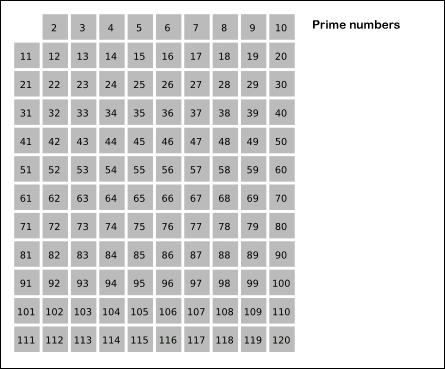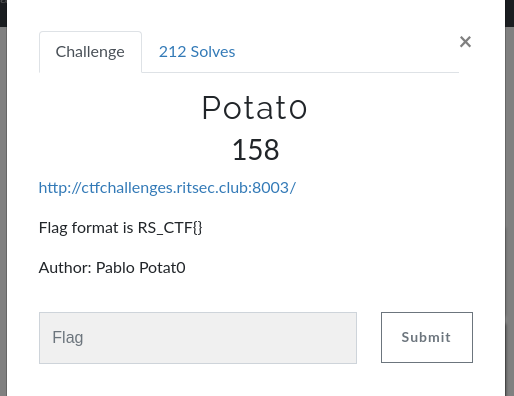Seive's Algorithm for sum of all prime numbers less than one million
function classifyPrime(num) {
if (num < 2) return false;
else {
for (let i = 2; i < num; i++) {
if (num % i === 0) return false
}
}
return true;
}
Now to get the sum we loop over all numbers up to 1 million
let sum = 0;
for ( let i = 2; i < 1000000; i++ ) {
if (classifyPrime(i)) {
sum += i;
}
}
Let's see what’s wrong with this approach. To classify a prime number say 11, we divide 11 by all the numbers starting from 2 up to 10. To classify 13 we repeat the same process, divide it by all numbers from 2 to 12. You can see where this is going. As the number increases, each classification will take more time than the previous one. In CS term the Big O of this approach is O(n2) which is really really bad for an algorithm.
Optimization
We can optimize this by not classifying Even numbers since they are for sure not prime. By increasing the counter up by 2 in the two for loops we can ignore all the even numbers. That would decrease the processing time by half. But that’s still way off from being a good algorithm.
We can further optimize by taking divisors up to square root of num. In our for loop of checkPrime function, the loop should only continue up to the √num. We have now significantly decreased the number of divisors but this is still no good for the large value of N.
Primality Test
There’s another much much better way to classify prime and that is “Primality Test Algorithm”. This algorithm does not give prime factors but only state whether the input number is prime or not. Hence there’s much less computation to do.
function primality(num) {
if (num <= 1) return false
else if (num <= 3) return true
else if (num % 2 === 0 || num % 3 === 0) return false
let i = 5;
while (i * i <= num) {
if (num % i === 0 || num % (i + 2) === 0) {
return false
}
i = i + 6;
}
return true;
}
I used both the algorithms to classify the 50 millionth prime number 982,451,653 and the result was:
# first Algorithm: 2952.744ms
# primality: 0.527ms
Similarly, I used those two algorithms to get the sum of all primes below 1 million and this was the result
console.time('runtime');
for (let i = 0; i < 1000000; i++) {
if (classifyPrime(i)) { // primality(i)
sum += i;
}
}
console.timeEnd('runtime');
# First algorithm : 705403.287ms // About 11 minutes
# Using Primality algorithm : 117.574ms
Wot !! 11 minutes and 1 second !! Primality Test is in fact considered to be the fastest prime detection algorithm. But wait there’s another even better algorithm for this type of prime calculations. This next algorithm gets the same result in 50ms.
Sieve’s Algorithm
The *Sieve of Eratosthenes is a simple, ancient algorithm for finding all prime numbers up to any given limit. Keep in mind - this algorithm can only generate a list of prime numbers but cannot classify a given number as a prime number or not.
 Sieve’s Algorithm
Sieve’s AlgorithmIn theory, this is very easy but in programming minor complexities occur due to array mapping. Here’s how it works. Let’s say we need to get all the prime numbers up to a number N.
Step 1: We generate an array of numbers starting from 2 to N-1. So now we have N-2 elements in the array.
Step 2: Then all the elements of the array are set to boolean value TRUE. True means they are prime (yet). But as we proceed we’ll have many False values. It’s analogous to how we filter out unwanted particles using a sieve. At first, all of them are in the sieve machine (set to True) and then at last only the required particles (prime numbers) are present.
 Source: www.tigtagcarolina.com
Source: www.tigtagcarolina.comStep 3: Now starting from the 2nd index of the array to the last, we remove the multiples of the number. But first, we need to check if the current number ( or index of the array ) is TRUE or false. If the value is TRUE, we calculate its multiple and if it’s false we don’t.
So what do we do once we find the multiples? We set the boolean value of that index to FALSE. Don’t worry if this sounds confusing right now ( I’m not very good at explaining ) but this example will clear up everything - I promise!
Example: We start with the 2nd index of the array (every time). Its value in the array is TRUE. Hence we proceed to calculate its multiples i.e. 4, 6, 8, 10, 12, … in the array and set them to false. Then we get to 3. Again, the value in the 3rd index is TRUE and so we proceed in a similar manner setting all the multiple of 3 i.e. 9, 12, 15, 18, … to false. Now comes 4. But remember the 4th index is already set to false since it was one of the multiples of 2. So we do not need to find its multiples. We keep proceeding in this manner until the end.
Notice that I didn’t include 6 in the multiples of 3. It so happens that, for a number n we can start counting its multiple from n^2. Example: for n = 5, we do not need to look for 10, 15, 20. These numbers are already cut out by previous numbers and excluding them will save a tiny bit of processing time.
Step 4: Now we have an array with mixed values of True and False. True indicates that the number is a prime and false indicates the number isn’t prime. We loop through the array and add the index value whose value is set to True. And finally, we will have the sum of all required Primes.
// Eratosthenes algorithm to find all primes under n
const eratosthenes = (n) => {
let array = []
let output = [];
let upperLimit = Math.sqrt(n)
// We need to make an array from 2 to (n - 1)
// For easy indexing we add extra two elements 0, 1 hence the length = n
for (let i = 0; i < n; i++) {
array.push(true);
}
// Remove multiples of primes starting from 2, 3, 5,...
for (let i = 2; i <= upperLimit; i++) {
if (array[i]) {
for (let j = i * i; j < n; j += i) {
array[j] = false;
}
}
}
// All array[i] set to true are primes
sum = 0;
for (let i = 2; i < n; i++) {
if(array[i]) {
sum += i;
}
}
return sum;
};
The downside of Sieve’s Algorithm
You must have probably guessed the problem with this algorithm. Yes, it’s the memory consumption! For N = 1million we need an array of size 1million! In Node for large values of N, we see the classic javascript error - “ heap out of memory “. But Node can easily handle up to N = 50 million.
<--- JS stacktrace --->
==== JS stack trace =========================================
FATAL ERROR: CALL_AND_RETRY_LAST Allocation failed - JavaScript heap out of memory
If you’ve read this far I hope you enjoyed it :)


Comments
Post a Comment